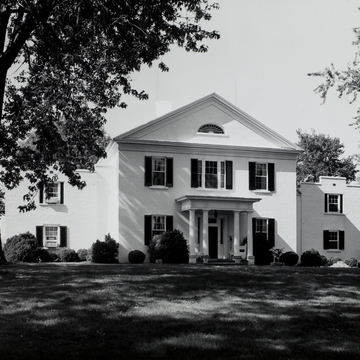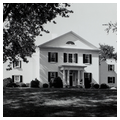You are here
Happy Retreat (Mordington)
Charles Washington, who had owned the land earlier, built two wings of Happy Retreat and connected them by a breezeway pending the time when he might erect a central block. Washington died in 1799 before completing the house, and another owner, Isaac A. Douglass, added the central section soon after his purchase in 1837. Douglass named the house Mordington after an ancestral Scottish home. In the 1940s, Raymond J. Funkhouser acquired and restored this and other Washington family houses in Jefferson County (see Charles Town Vicinity).
Happy Retreat is a good example of the transitional 1830s Federal–Greek Revival style so often found in the lower Valley of Virginia. Its broad, three-bay brick facade, painted white, is capped with a pedimented gable with a lunette
Writing Credits
If SAH Archipedia has been useful to you, please consider supporting it.
SAH Archipedia tells the story of the United States through its buildings, landscapes, and cities. This freely available resource empowers the public with authoritative knowledge that deepens their understanding and appreciation of the built environment. But the Society of Architectural Historians, which created SAH Archipedia with University of Virginia Press, needs your support to maintain the high-caliber research, writing, photography, cartography, editing, design, and programming that make SAH Archipedia a trusted online resource available to all who value the history of place, heritage tourism, and learning.























